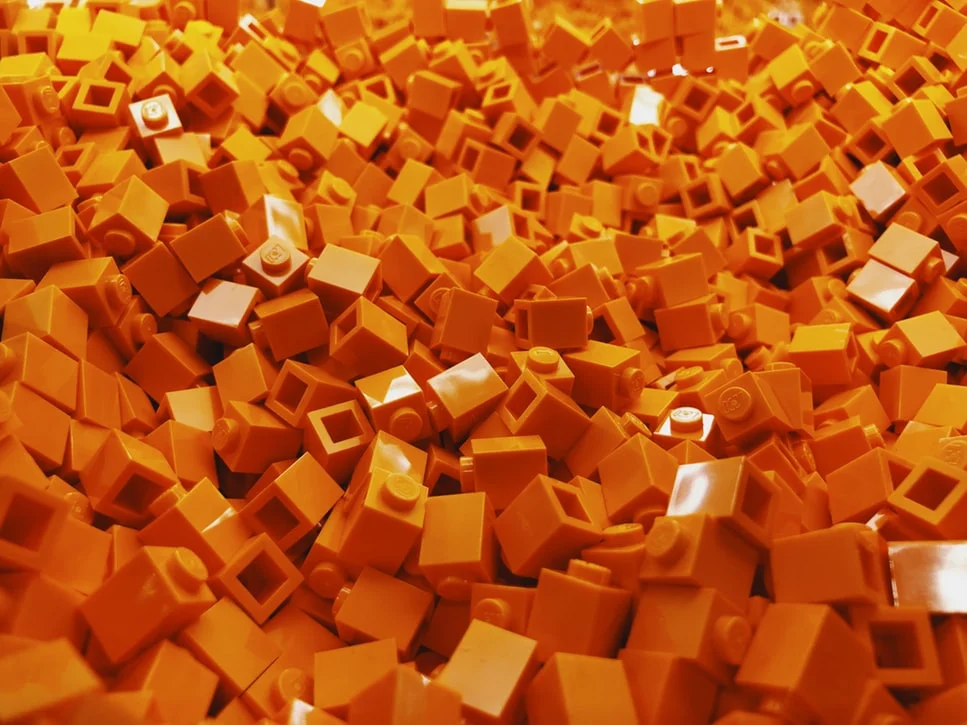By Alexander Goh
Alexander is a sophomore at Yale-NUS and an Apprentice at Skillseed. He’s interested in learning how to create ground-up sustainable change. He also likes corgis.
Cover Photo by Ryan Quintal on Unsplash
When you sign up for a Design Thinking course, you expect to be introduced to a variety of accessible yet versatile innovation models, listen to a few engaging presentations, and put your new frameworks to the test by working through a series of case studies. You may not, however, expect to find yourself playing with Legos.
Before I joined Skillseed as an intern, I attended a Skillseed-led “Iterating to Change” workshop, as part of the week-long Social Impact Bootcamp hosted at Yale-NUS. During the course, the trainers asked us to brainstorm solutions that could address Singaporeans’ apathy towards climate change (an ambitious task, I know.) I expected to be illustrating our analyses and recommendations using slide decks, or perhaps on a giant piece of mahjong paper, before presenting our solutions to the class.
Instead, our facilitators produced a huge bag of Legos, eliciting uncharacteristically enthused cheers from a room of tired millennials.
Much to our delight and fascination, we were told to literally construct prototypes of our solutions. Even though I’d seen my Bootcamp coursemates inspired, enraptured and thoughtful at alternate intervals over the last two days, this was the first time I’d witnessed them being so genuinely excited.
That’s the thing about problem solving with “serious play” is – not only does it encourage creativity and innovation; it really livens up the room. I mean, how often do you get to play with Legos during a training session? In addition to its novelty (a valuable trait in and of itself) serious play has advantages aplenty. I sat down with Skillseed facilitator Kei Franklin to pick her brain about the plentiful positives of playing with blocks.
So… Legos! What’s the deal here?
Kei: Over the last couple years of conducting Design Thinking workshops, we’ve transitioned from ideating solutions through “upcycled” rough materials (pictured below) to using Legos.
There are several reasons for this. Practically speaking, prototyping with Legos is cleaner and safer than gluing rough materials together. But on a conceptual level, Legos are great ideation and prototyping tools because they’re a medium that asks to be constructed. All the pieces fit together seamlessly, which it makes super easy to construct your ideas. At the same time, it’s quite a forgiving medium because it’s so easy to dismantle. There’s a lot of flexibility inherent to the Lego medium, and that’s what the ideation and prototyping process needs.
That said, participants are also constrained by the Lego medium, because the Legos are consistent in shape and form, and there are only specific ways in which they fit together. But we find that this is a constraint that’s both productive and generative.
Productive and generative constraint? That sounds a little like an oxymoron.
Kei: A little! Legos are constraining because there’s only so much one can do with a pile of little bricks and figures. But too much choice can be paralyzing. For example, if you give me a piece of paper and ask me to draw a prototype of my solution, there’s a billion possibilities. I mean, I can draw anything. Where do I start? What’s the best way to do this? But if my choices are constrained by the medium that I have to work with, I suddenly have a material starting point that offers a bit fewer options. I have to think unconventionally.
Therein lies the beauty of prototyping with Legos: you have to think outside the box in order to do it. You have to think laterally. It doesn’t matter how abstract or complex your idea is, you have to represent it exclusively with Legos. When you put people in this situation, it’s really interesting how people come up with solutions that span the full range from hyper literal to hyper metaphorical.
Oh, like the cigarette box!
Kei: Exactly like the cigarette box. If you recall, during the Social Impact Bootcamp, participants were told to prototype your solutions to tackle climate change using Legos, which encouraged people to think out-of-the-box because not all climate change solutions would require the building of a physical structure.
This task required lateral thinking, and of the of the participants really rose to the challenge. He used Legos to build a cigarette box, which was meant to represent his solution: to require that environmentally unsustainable products like tissue packets have warning labels on them, in the same way that tobacco companies are required to have a label on their cigarette boxes warning users about the risks of smoking. These environmental warning labels would alert users as to how their profligate use of disposables was increasing their carbon footprint.
In another class, we challenged participants to prototype an alumni engagement solution. One participant built a staircase out of Legos in order to illustrate her idea of a virtual online alumni network. Not getting the connection? Well, the steps represented different periods of time and stages of life that one goes through after graduation, and how alumni and current students could interact, communicate with, and support one another. The value of prototyping with Legos is that it allows for a wide range of representations, from the more abstract, and metaphorical to the physical and literal.
You’ve spoken quite extensively about “prototyping”, which is one component of Skilseed’s Design Thinking framework. How heavily does the physicality of the Lego medium factor into other phases of Design Thinking?
Kei: The physicality of the Lego medium certainly supports other steps of the design thinking process. As you’ll recall, there are six steps to the design thinking framework: Empathize, Define, Ideate, Prototype, Test and Implement. Legos allow you to move back and forth between the Ideation and Prototyping stages because - as you’re building a physical structure as part of your solution - you begin to realize what works and what doesn’t, leading to iterative refinement of your ideas.
This is the beauty of working with physical material – by building a model, you’re already engaging in a prototyping and validation process of sorts, and with a medium as easily dismantled as Legos, you can immediately improve the model as you go!
During the Social Impact Bootcamp, one of the participants decided that their solution to climate change apathy would be an art exhibition on Orchard Road to raise awareness about the severity of climate change. When they were building a model of that exhibition, they had to make decisions like: How big should this exhibit be? How do we avoid congestion on roads and pavements? How many exits and entrances should we have? Where are people going to walk? And so on. When you start building your product (or even a prototype of it), challenges and questions will naturally surface, that will need to be addressed. Ideally, there should be a feedback loop between prototype and ideation. This feedback loop is very important for the processes of generation, creation and innovation.
In conclusion, Legos are clean and safe, they can be dismantled and reassembled with ease, they place productive and generative creative constraints upon participants, and they encourage lateral thinking while streamlining the design thinking process.
I’m a huge fan of Legos, and I’m even not being paid by them to say this!
Legos are just one of the many tools which we’ve used in conjunction with our social impact toolkit, such as Asset-Based Community Development and Design Thinking for Social Impact and the Endowment Portrait. Find out more about our other tools here.




